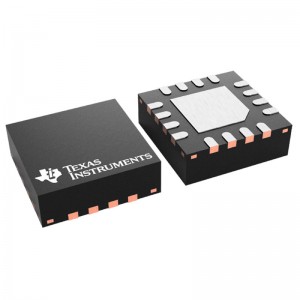
Products
LMR23625CDDAR SIMPLE SWITCHER®
Features for the LMR23625
4-V to 36-V input range
2.5-A continuous output current
Integrated synchronous rectification
Current mode control
Minimum switch ON time: 60 ns
2.1-MHz switching frequency with PFM and forced-PWM-mode options (HSOIC)
2.1-MHz switching frequency with forced-PWM mode only (WSON)
Frequency synchronization to external clock
Internal compensation for ease of use
75-µA quiescent current at no load
Soft start into a prebiased load
High duty-cycle operation supported
Precision enable input
Output short-circuit protection with hiccup mode
Thermal protection
8-Pin HSOIC with PowerPAD™ package
12-Pin WSON wettable flanks package with PowerPAD™
Use the LMZM33603 module for faster time to market
Create a custom design using the LMR23625 with the WEBENCH Power Designer
Description for the LMR23625
The LMR23625 SIMPLE SWITCHER is an easy-to-use 36-V, 2.5-A synchronous step-down regulator. With a wide input range from 4 V to 36 V, the device is suitable for various industrial application for power conditioning from unregulated sources. Peak current-mode control is employed to achieve simple control-loop compensation and cycle-by-cycle current limiting. A quiescent current of 75 µA makes it suitable for battery-powered systems. An ultra-low 2 µA shutdown current can further prolong battery life. Internal loop compensation means that the user is free from the tedious task of loop compensation design. This also minimizes the external components.
The device has an option for fixed-frequency FPWM mode to achieve small output-voltage ripple at light load. An extended family for HSOIC is available in 1-A (LMR23610) and 3-A (LMR23630) load current options in pin-to-pin compatible packages which allows simple, optimum PCB layout. A precision enable input allows simplification of regulator control and system power sequencing. Protection features include cycle-by-cycle current limit, hiccup-mode short-circuit protection and thermal shutdown due to excessive power dissipation.
1. Who are the staff in your R & D department? What are your qualifications?
-R & D Director: formulate the company’s long-term R & D plan and grasp the direction of research and development; Guide and supervise r&d department to implement company r&d strategy and annual R&D plan; Control the progress of product development and adjust the plan; Set up excellent product research and development team, audit and training related technical personnel.
R & D Manager: make new product R & D plan and demonstrate the feasibility of the plan; Supervise and manage the progress and quality of r&d work; Research new product development and propose effective solutions according to customer requirements in different fields
R&d staff: collect and sort out key data; Computer programming; Conducting experiments, tests and analyses; Prepare materials and equipment for experiments, tests and analyses; Record measurement data, make calculations and prepare charts; Conduct statistical surveys
2. What is your product research and development idea?
- Product conception and selection product concept and evaluation product definition and project plan design and development product testing and validation launch to market








